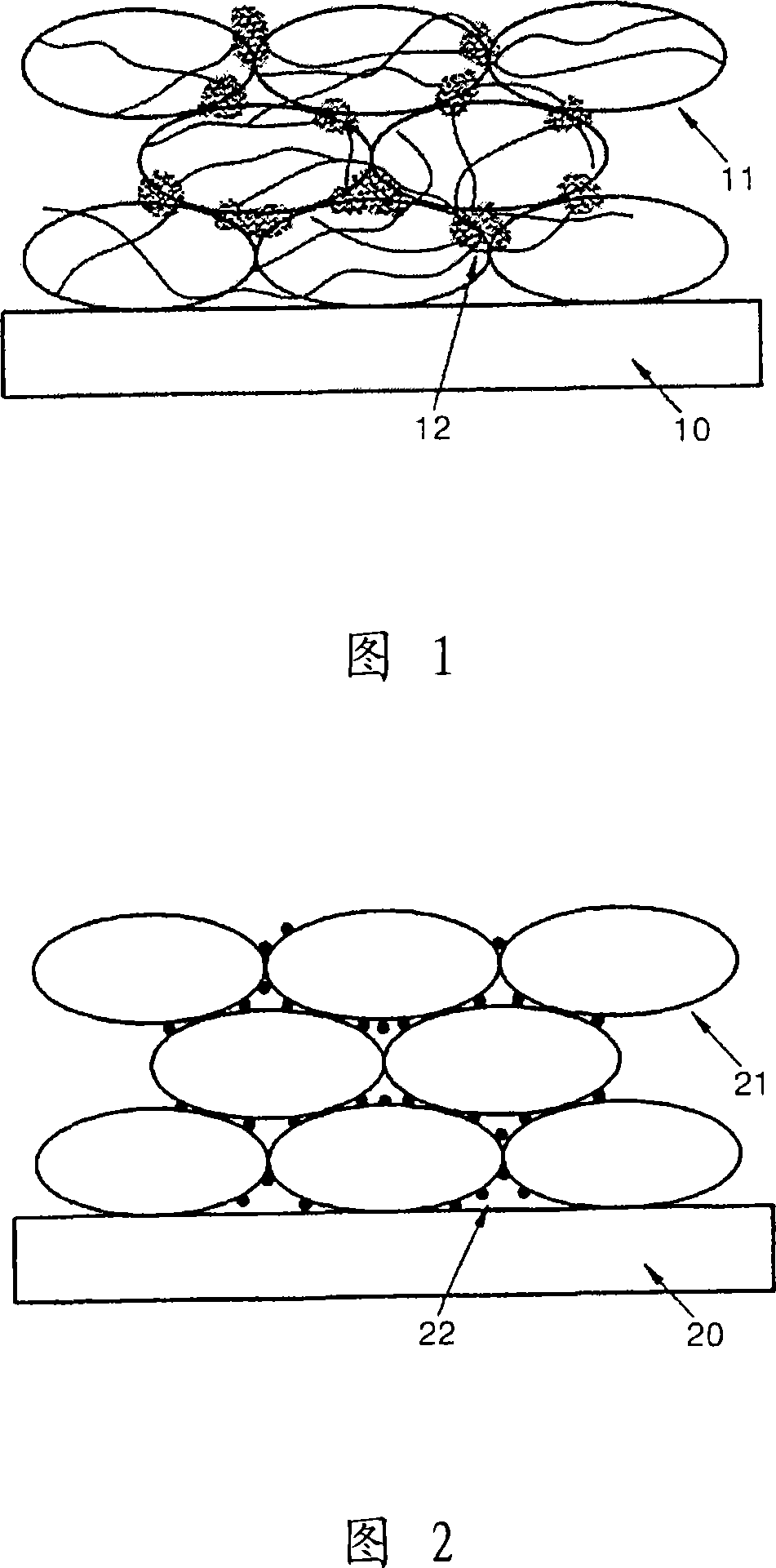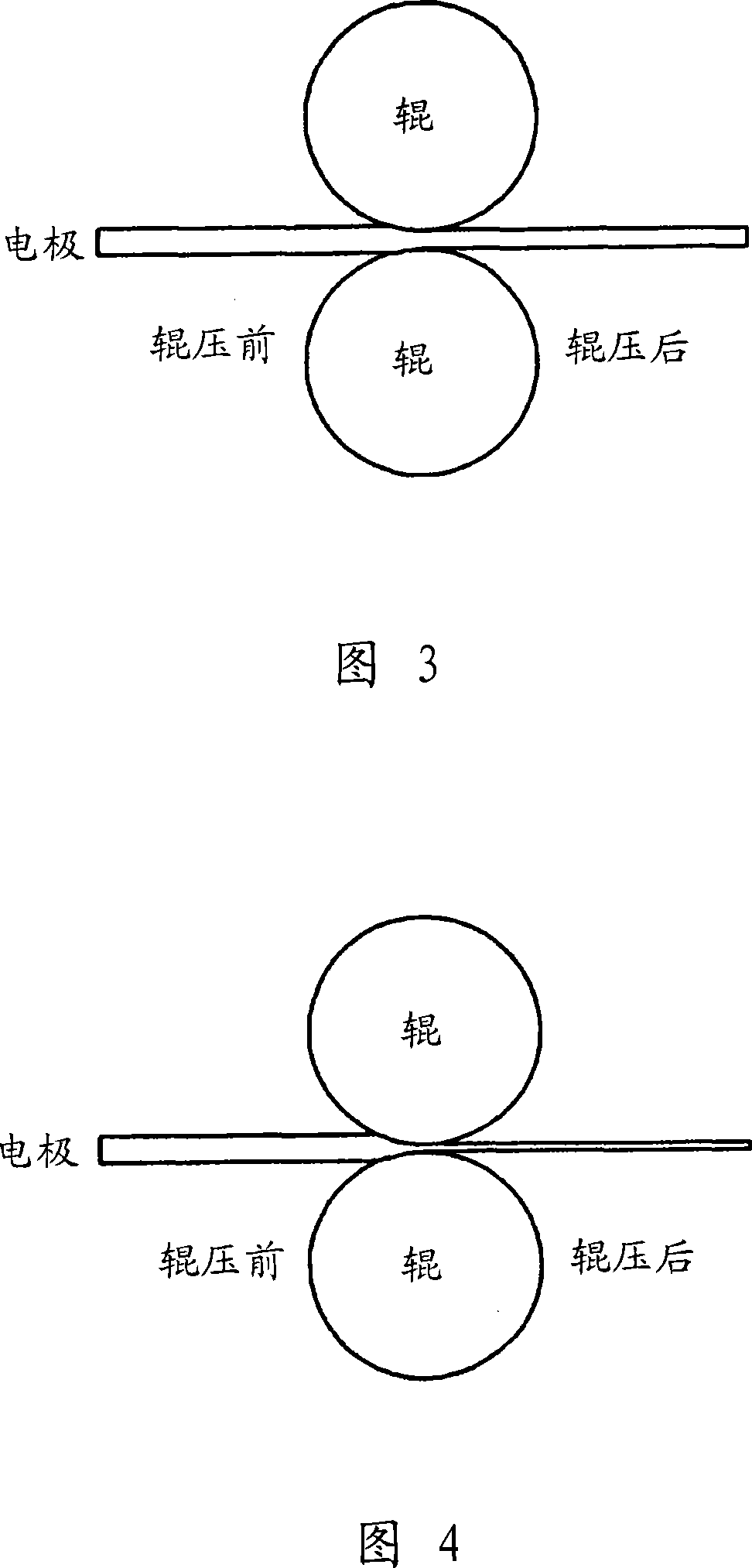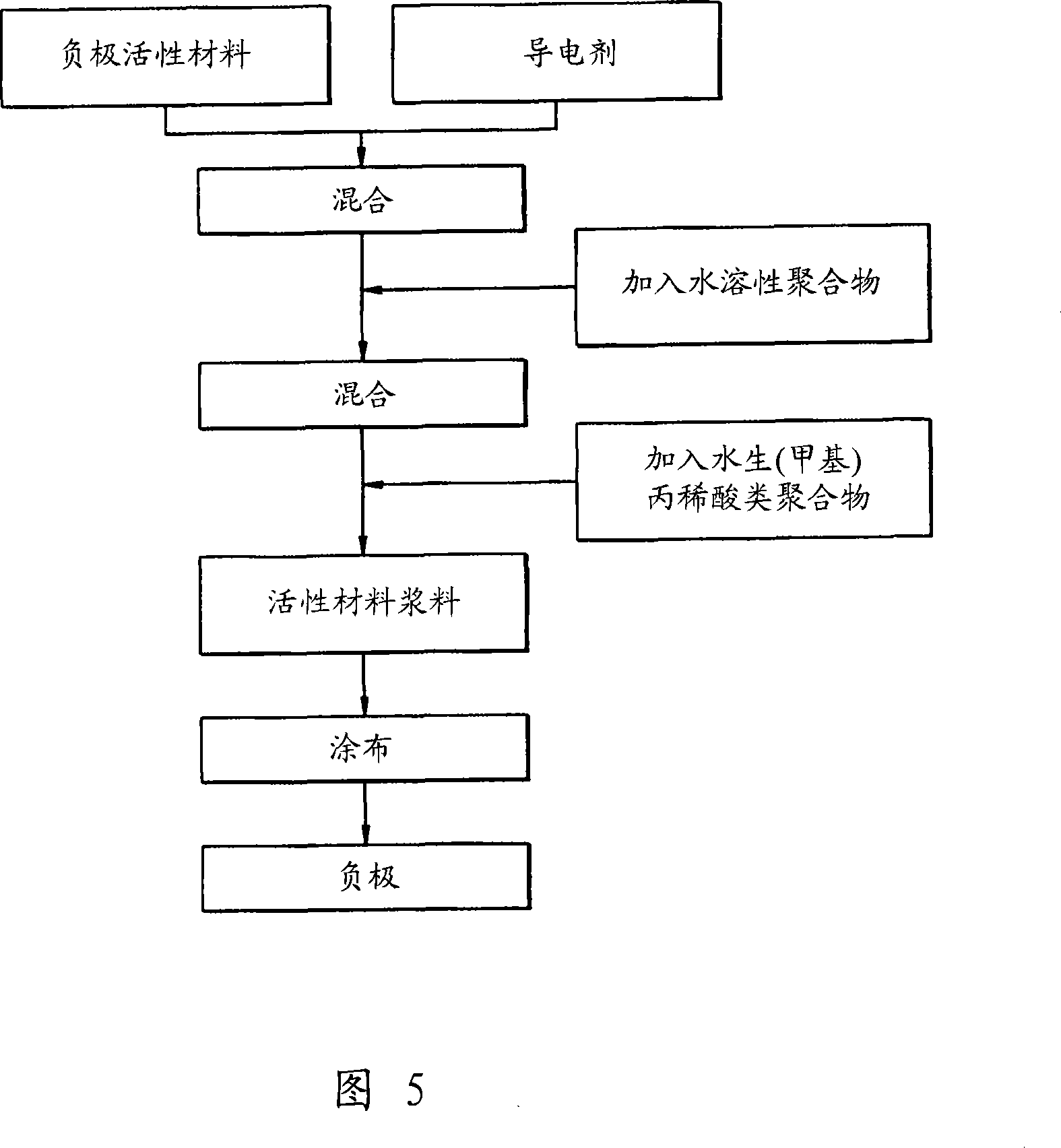Anode for lithium battery and lithium battery employing the same
A lithium battery and negative electrode technology, applied in battery electrodes, non-aqueous electrolyte battery electrodes, negative electrodes, etc., can solve the problems of electrode structure changes, reduced life of metal/graphite composite negative electrodes, weak adhesion, etc., to improve life characteristics, high energy density, effect of improving assembly density
- Summary
- Abstract
- Description
- Claims
- Application Information
AI Technical Summary
Problems solved by technology
Method used
Image
Examples
Embodiment approach
[0041] According to another embodiment of the present invention, a lithium battery includes the negative electrode. A lithium battery according to one embodiment is shown in FIG. 8 .
[0042] First, a positive electrode can be manufactured as follows. First, a positive active material, a conductive agent, a binder resin, and a solvent are mixed to prepare a positive active material composition. The positive active material composition was directly coated on a metal collector and dried to prepare a positive plate. Alternatively, the positive active material composition is casted on a separate support and dried to form a film, and then the film is separated from the support and laminated on a metal collector to prepare a positive plate.
[0043] The positive active material may be lithium-containing metal oxides generally used in the art. Non-limiting examples of suitable positive electrode active materials include LiCoO 2 , LiMn x o 2x (x=1, 2), LiNi 1-x mn x o 2x (whe...
Embodiment 1
[0055] 77 g of a negative electrode active material having a particle diameter of 20 μm (composite active material including graphite, silicon metal, and carbon obtained from Osaka Gas Chemical Co.) was mixed with 20 g of a conductive agent (graphite conductive agent obtained from Timcal Co., SFG6). 150 g of a 1% by weight sodium carboxymethylcellulose solution was added thereto and mixed to form a solution. 3.75 g of 40% by weight polyethylhexyl acrylate having a particle size of 0.25 μm was dispersed in water, and water was added to the solution and mixed to prepare a slurry having 200 g of water.
[0056] The prepared slurry was coated on a copper (Cu) current collector to a thickness of about 80 μm using a doctor blade. The coated current collector was dried in a hot air drier, and then dried again in vacuum at 120° C. to prepare an anode. The negative electrode was rolled to a thickness of about 50 μm using a roller to prepare a negative electrode plate.
Embodiment 2
[0058] A negative plate was prepared as in Example 1, except that 100 g of a 1% by weight sodium carboxymethylcellulose solution and 5 g of 40% by weight polyethylhexyl acrylate dispersed in water were used.
PUM
| Property | Measurement | Unit |
|---|---|---|
| particle size | aaaaa | aaaaa |
| viscosity | aaaaa | aaaaa |
| viscosity | aaaaa | aaaaa |
Abstract
Description
Claims
Application Information
 Login to View More
Login to View More - R&D
- Intellectual Property
- Life Sciences
- Materials
- Tech Scout
- Unparalleled Data Quality
- Higher Quality Content
- 60% Fewer Hallucinations
Browse by: Latest US Patents, China's latest patents, Technical Efficacy Thesaurus, Application Domain, Technology Topic, Popular Technical Reports.
© 2025 PatSnap. All rights reserved.Legal|Privacy policy|Modern Slavery Act Transparency Statement|Sitemap|About US| Contact US: help@patsnap.com



